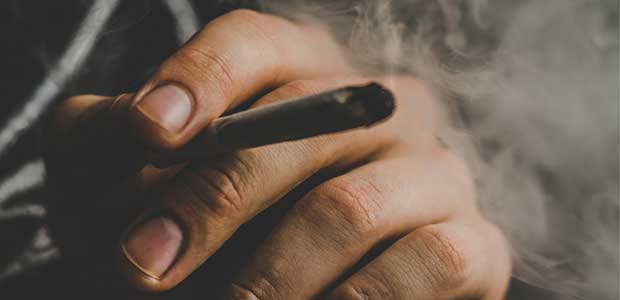
NIOSH Examines Effects of Secondhand Cannabis Smoke in Police Officers
NIOSH staff evaluated the effects of secondhand cannabis smoke in police officers who were on patrol as security for campus concert events at a university football stadium.
NIOSH examined the effects of secondhand cannabis smoke in a real-world, open-air setting. The staff evaluated secondhand cannabis smoke exposure among police officers who provided security for campus concert events at a university football stadium.
The investigation included collecting full-shift personal air samples and area air samples, as well as pre-shift and post-shift urine samples. In all of these, the investigators tested for tetrahydrocannabinol, or THC, which is the active ingredient in cannabis. In the urine samples, they also tested for two metabolites that are chemical markers of exposure to THC. They also collected 29 blood plasma samples from officers.
Nineteen of the 29 personal air samples and all area air samples collected had measurable amounts of THC. Out of 58 urine samples, small amounts of one chemical marker of THC exposure were detected in the urine of 34 percent of the participants, but not the other. No THC was found in any of the urine or blood samples, and there was no detection of the two metabolites in any of the blood samples.
NIOSH said it was difficult to draw clear-cut conclusions as the magnitude of the exposure was “very low,” and there are not many other studies to compare this one too. Even with the low exposure, some officers might experience some common, aggravating symptoms such as burning, itchy or red eyes, dry mouth, headache, and coughing. If officers are bother by the smoke, they should be moved to a low to no exposure zone.
“Individuals differ in their sensitivity and tolerance to secondhand cannabis smoke exposure,” the report reads. “What may impact one person may have no effect on others.”